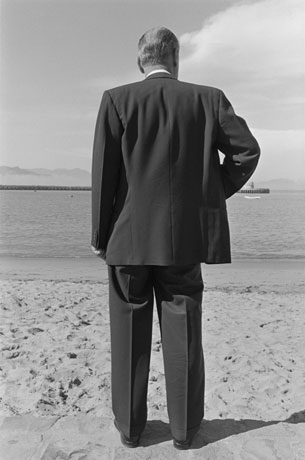 |
When the New Topographics exhibition appeared at the George Eastman House in 1975, it did not feel like a history-making event. Ranging from bland to butt-ugly, the 168 images that comprised the show seemed destined for obscurity or worse. That it upended the prevailing notions of fine art photography ranks as one of the greater ironies of art history, since few people saw the original show and even fewer saw its limited-run catalog. Socially engaged photographers got it immediately. Eager to engage with the actual circumstances of American life (as opposed to gilding its fading myths), they joined with a group of curators who wanted photography to be taken seriously as fine art. The shift wasn’t sudden. But the differences between old and new – when they came to light – couldn’t have been sharper.
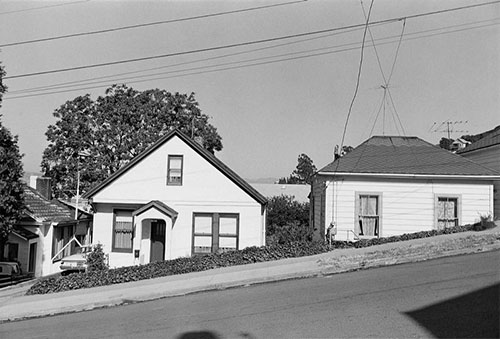 |
That their anti-aesthetic so completely dominates landscape photography today speaks to the triumph of banality, both in life and in art. As Ed Rusha put it in 1972, in a remark that forecast photography’s role in postmodernist thinking, “Sometimes the ugliest things have the most potential.” If that sounds like a grim assessment, take heart. Of the nine photographers who appeared in the original show there was a dissenting voice. It belonged to Henry Wessel. Where his cohorts (Robert Adams, Baltz, the Bechers, Joe Deal, Frank Gohlke, Nicholas Nixon, John Schott and Stephen Shore) avoided interpretive acts that could be construed as demonstrating a subjective viewpoint, Wessel seemed to be tipping his hand at every turn.
Seven works in the SFMOMA exhibition and 12 prints in a concurrent show at the Rena Bransten Gallery demonstrate that Wessel could make bland pictures with the best of them; but his real forte was creating images that demonstrated a highly cultivated sense of the absurd; mixing the high irony of Walker Evans with the street-wise alacrity of Cartier Bresson.
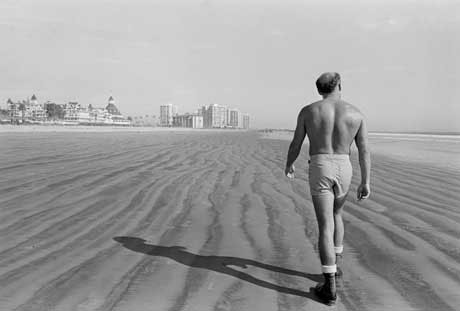 |
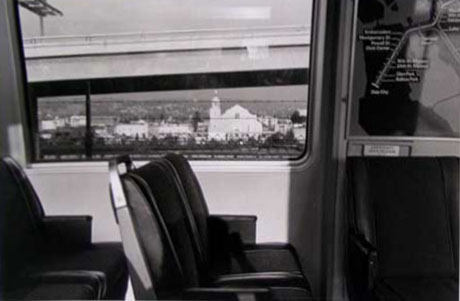 |
As such, his photos greet you with a nod and a wink. Albany, California (1973), a night shot of a tract house, parodies real estate photography, treating the home as if it were a celebrity, caught unaware by paparazzi. In Tuscon (1974), tall weeds appear well on their way to consuming a house. You can almost hear the photographer in the background shouting , “Score one for nature!” The ticky-tacky bungalow cantilevered into a hillside in Point Richmond, California (1974) feels like an optical trick. It’s not, but you could take it as such if you didn’t know Bay Area topography. New Mexico, with its minimalist rock garden and denuded tree, mocks the notion of a desert garden, while Las Vegas, a strip mall fronted by a sculpted figure balanced on a fingertip offers a precarious visual metaphor for unsustainable development.
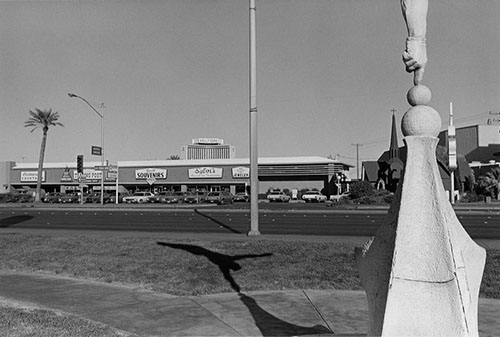 |
Contrary to its title, New Topographics wasn’t about topography; it was about the “built environment”. Logically, such pictures should have included people since the environments pictured are man-made, but for the most part they don’t. The sole exceptions are a few images from Stephen Shore.
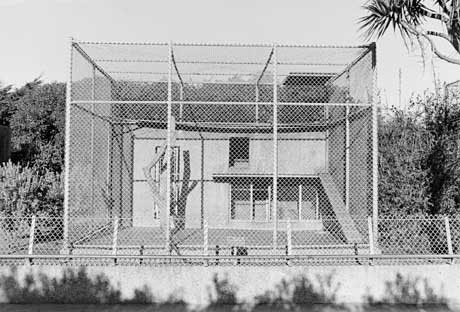 |
No doubt, other NP photographers felt this, too. But what they failed to express — and what Wessel showed in abundance — was humor. His photo of a man walking on Coronado Beach makes the town in the background look like a distant planet. In Waikiki, 1975, three shirtless men appear almost alien, too, strolling down a palm-studded street amidst high rises. Then there’s his amazing shot of the East Bay hills shot from a BART train where the view is framed twice: once by a window and again through the space between an overpass and the 880 Freeway.
–DAVID M. ROTH
Henry Wessel: Vintage Still Photographs @ Rena Bransten through August 21, 2010
New Topographics @ SFMOMA through October 3, 2010
senor roth, you might even get me down to the city by the bay thanks to your review. i like all he photographers yoy mention in the NP, but i’m less familiar with wessel.
thanks